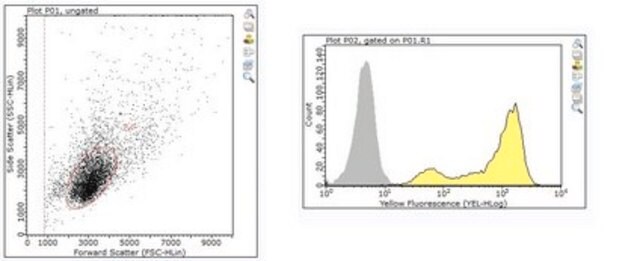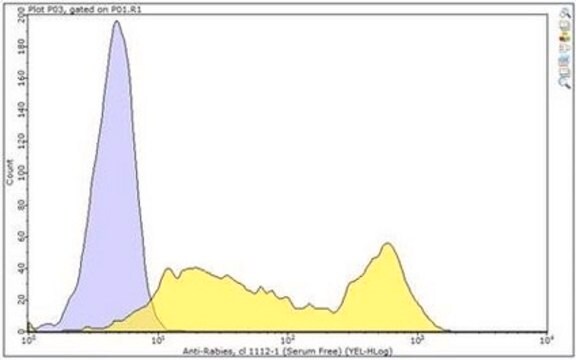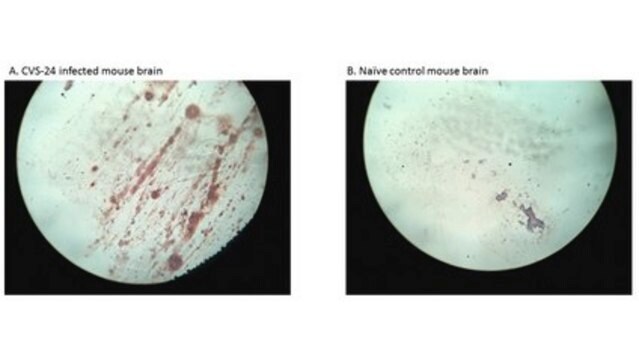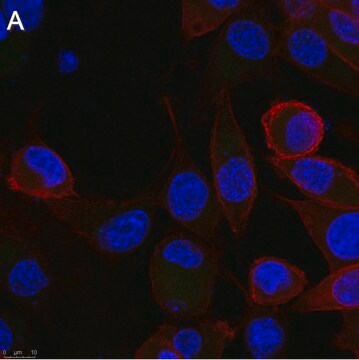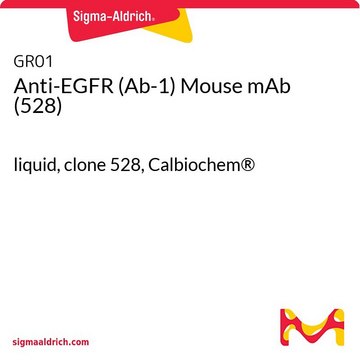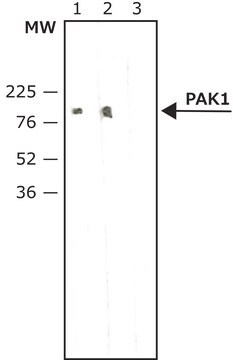MABF2073
Anti-Rabies Virus CVS-11 Antibody, clone 509-6
clone 509-6, from mouse
Sinónimos:
Glycoprotein, Glycoprotein Rabies virus, Rabies virus strain CVS-11
About This Item
Productos recomendados
origen biológico
mouse
Nivel de calidad
forma del anticuerpo
purified immunoglobulin
tipo de anticuerpo
primary antibodies
clon
509-6, monoclonal
reactividad de especies
rabies virus
reactividad de especies (predicha por homología)
all
envase
antibody small pack of 25 μg
técnicas
ELISA: suitable
flow cytometry: suitable
neutralization: suitable
isotipo
IgG2aκ
Nº de acceso UniProt
Condiciones de envío
ambient
modificación del objetivo postraduccional
unmodified
Descripción general
Especificidad
Inmunógeno
Aplicación
ELISA Analysis: A representative lot detected Rabies Virus in ELISA applications (Marissen, W.E., et. al. (2005). J Virol. 79(8):4672-8).
Fluorescence Activated Cell Sorting (FACS) Analysis: A representative lot detected Rabies Virus in Fluorescence Activated Cell Sorting (FACS) applications (Marissen, W.E., et. al. (2005). J Virol. 79(8):4672-8).
Inflammation & Immunology
Calidad
Flow Cytometry Analysis: 1 µg of this antibody detected glycoprotein of Rabies virus in one million L929 cells expressing the rabies protein.
Descripción de destino
Forma física
Almacenamiento y estabilidad
Otras notas
Cláusula de descargo de responsabilidad
¿No encuentra el producto adecuado?
Pruebe nuestro Herramienta de selección de productos.
Código de clase de almacenamiento
12 - Non Combustible Liquids
Clase de riesgo para el agua (WGK)
WGK 2
Punto de inflamabilidad (°F)
Not applicable
Punto de inflamabilidad (°C)
Not applicable
Certificados de análisis (COA)
Busque Certificados de análisis (COA) introduciendo el número de lote del producto. Los números de lote se encuentran en la etiqueta del producto después de las palabras «Lot» o «Batch»
¿Ya tiene este producto?
Encuentre la documentación para los productos que ha comprado recientemente en la Biblioteca de documentos.
Nuestro equipo de científicos tiene experiencia en todas las áreas de investigación: Ciencias de la vida, Ciencia de los materiales, Síntesis química, Cromatografía, Analítica y muchas otras.
Póngase en contacto con el Servicio técnico